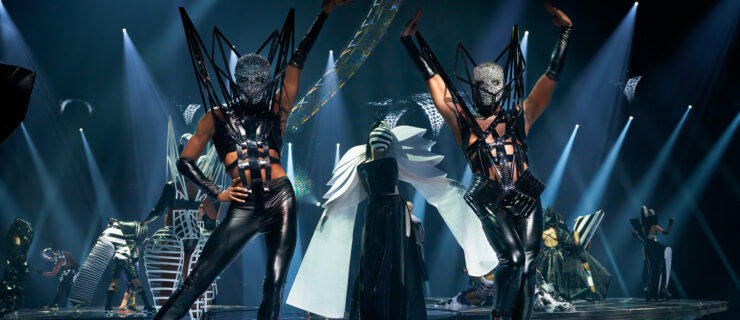Troubleshooting Tap Turns: Tips for Pirouettes in Tap Shoes
You know that pirouette dream, when your placement is so perfect you can keep turning forever? That dream is the reality for highly technical tappers, who benefit from the decreased friction of their shoes. Get the placement right and, with a strong spot, they can pirouette for days.
But turning in tap shoes isn’t all easy. In fact, those delightfully friction-free shoes bring their own set of challenges, and dancers can easily fall into the spinning-top trap by letting the turn control them, rather than the other way around. Here’s how to harness your tap-turning potential.
Set Up for Success
As with any pirouette, preparation is key. “It’s all about achieving a straight supporting leg,” says Justin Boccitto, who teaches tap at Broadway Dance Center in NYC. “As you enter the relevé, think about putting tension into the floor as if you were drilling a hole.” Boccitto stresses that “tension” doesn’t mean an aggressive push out of the beginning plié: Just straighten the leg, and let the tap shoe do the rest of the work.
Marshall Ellis, of Marshall Ellis Dance School in Orlando, FL, also recommends a lighter push out of the preparatory position. “It’s 80 percent finding the balance on your supporting leg, 20 percent pushing from the back foot,” he says.
Thinking about the initial placement and movement of your arms can also contribute to a successful takeoff. Juliane Godfrey, dance captain for SpongeBob SquarePants: The Broadway Musical, uses port de bras to maintain technique in tap pirouettes. “At the start of the turn, bring your arms from fourth to first position a bit slower than feels natural,” she says. “That will help you maintain control.”
Stay in Control
Always center your weight over the supporting leg. “Once you find that sweet spot, you can’t relax into the position,” Ellis says. “You need to maintain your core strength and placement as you turn.”
A lifted center can also help avoid the dreaded spinning-top syndrome—the tendency of some tappers to spin passively, like a dreidel. Ellis recommends a higher relevé. “In tap shoes, you usually have some sort of heel. You need to rise up out of that in the relevé, and lift through your center to avoid that spinning aspect,” he says.
 Juliane Godfrey recommends putting gaffer’s tape on the bottom of your shoes to avoid slips. (photo by Casey Gill, courtesy Godfrey)
Juliane Godfrey recommends putting gaffer’s tape on the bottom of your shoes to avoid slips. (photo by Casey Gill, courtesy Godfrey)
Controlled and distinct pirouettes also require a solid spot with a distinct rhythm that relates to the music. “You need to count!” Godfrey says. Rhythm is particularly important when coordinating multiple turning tappers. “Making sure everyone is in agreement on the exact location and counts of the spot will help synchronize turns,” Boccitto says.
Know Your Exit Strategy
We think of nailing multiples as the end-all-be-all, but in tap shoes, executing a clean and controlled double is arguably more impressive than whipping out an unspecified number of pirouettes. Ellis stresses “knowing your number” before you even enter a turn to ensure a clean landing. That way, when it comes time to transition to the next step, you’re not tripped up by excess power. A clean landing also requires a certain comfort level with the transition. “Know how many turns you’re going to do, and where you’re going afterwards,” Ellis says.
According to Boccitto, landings depend upon a grounded plié. “A lot of times, we exit turns with a stamp stamp, or a flap ball change. We need to really breathe and plié into those steps to create a smooth landing,” he says.
Many tappers worry about slipping as they come out of a turn. “There’s a risk that your landing foot will kind of swivel under you because of the lack of friction with the floor,” Boccitto says. He recommends creating tension in the leg muscles to avoid this landing swivel. “With tap dancing, we’re always telling students to relax, but in this case, there has to be an element of ‘good tension,’ ” he says. “Think about creating resistance against the floor and even against your own body. Tensing the quads and inner thighs as you touch the ground can add extra support to your landing.” Godfrey also recommends using gaffer’s tape on the bottom of your taps if the stage is particularly slick.
A version of this story appeared in the May/June 2018 issue of Dance Spirit with the title “Tap Turn Troubleshooting.“




